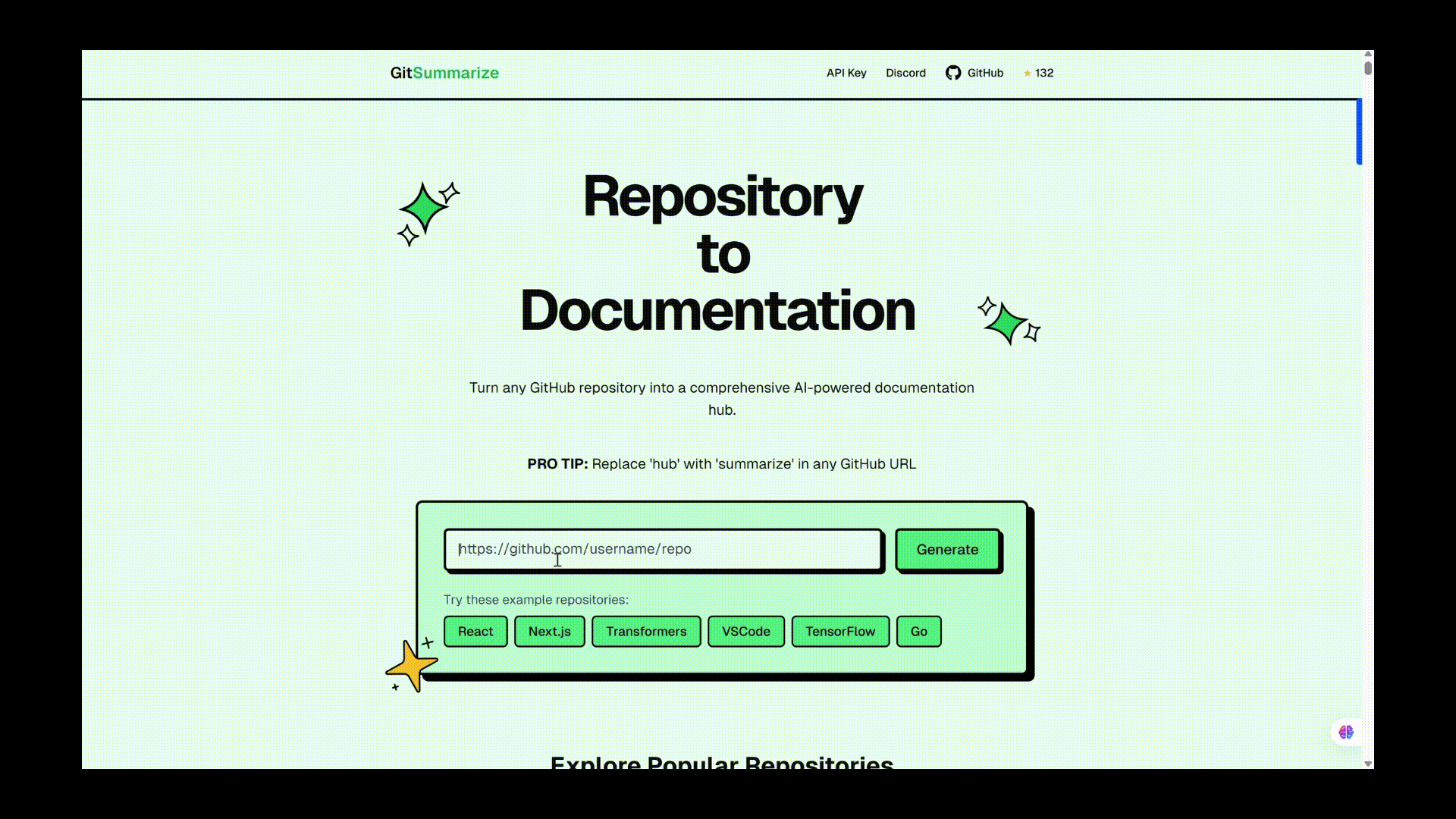- The Vision, Debugged;
- Posts
- GitSummarize: The TL;DR for your GitHub Repos
GitSummarize: The TL;DR for your GitHub Repos
PLUS: Understanding OpenAI's latest model launches

Howdy Vision Debuggers!🕵️
This week, Spark and Trouble dive into the deep end of GitHub and emerge with an AI-powered compass that makes sense of even the most cryptic codebases.
Here’s a sneak peek into today’s edition 👀
Anthropic analyzes real-world language model interactions
OpenAI’s cookbook for GPT-4.1 prompting
Product Labs: Decoding GitSummarize
Time to jump in!😄
PS: Got thoughts on our content? Share 'em through a quick survey at the end of every edition It helps us see how our product labs, insights & resources are landing, so we can make them even better.

Whatcha Got There?!🫣
Buckle up, tech fam! Every week, our dynamic duo “Spark” ✨ & “Trouble”😉 share some seriously cool learning resources we stumbled upon.
 | ✨ Spark’s Selections
|
 | 😉 Trouble’s Tidbits
|

Product Labs🔬: Decoding GitSummarize
You know that feeling when you land on a promising GitHub repo… and instantly bounce because the README is five years old and the codebase might as well be written in ancient Sumerian?
Enter GitSummarize — an AI tool that acts like a friendly, knowledgeable teammate who actually read the entire codebase and is ready to walk you through it.
What’s in it for you?
Navigating large and complex codebases can be a daunting task, especially when documentation is sparse or outdated. GitSummarize addresses this challenge by transforming any GitHub repository into a comprehensive, AI-generated documentation hub. By leveraging Gemini 2.5, GitSummarize provides developers with clear insights into code structures, functionalities, and interdependencies, streamlining the onboarding process and enhancing code comprehension.
Developed by Antarixxx, GitSummarize is the AI tool you wish every open-source project had. It's trained on the notion that documentation should not be an afterthought. It was built to make codebases less scary, reduce ramp-up time, and even help contributors understand project architecture with minimal effort.
AI-Powered Documentation: Uses Gemini 2.5 Pro under the hood to generate human-readable summaries of code, functions, and repository structure. It's like ChatGPT but trained on your repo.
One-Click Summarization: Just alter the GitHub URL to instantly get a full-page documentation view of any public repo—no install, no account, just magic.

Hey presto, complete documentation in 5 seconds!
Open Source & Extensible: Developers can contribute to the project, fork it for private repos, or even build internal documentation bots.
Visual Clarity: GitSummarize includes a clean UI that neatly categorizes files, functions, and descriptions—much better than digging through a jungle of nested folders.

Ran out of credits, no worries, use your Gemini API key
In a world where devs frequently ghost repositories and newcomers struggle to decipher cryptic code, GitSummarize acts like a translator between your repo and reality. It’s particularly useful for open-source contributors, new team members onboarding to complex systems, and yes, Product Managers like Spark who’d rather not learn Rust just to write a feature brief.
GitSummarize is a good example of the Product-Led Growth Framework - a go-to-market strategy where the product markets itself through utility. The tool becomes inherently viral by solving a very real user problem (i.e., poor documentation).
Product-Led Growth (PLG) is a go-to-market strategy where the product itself drives user acquisition, expansion, conversion, and retention. It relies on delivering immediate value through self-serve experiences like free trials or freemium models, enabling users to discover the product’s benefits without heavy sales involvement.
What’s the intrigue?
GitSummarize isn’t the first to attempt AI-generated documentation, but it might just be the most practical. Rather than launching a bloated platform, it inserts itself into a developer’s existing workflow, like GitHub, but smarter.
Frictionless Entry Point: The ability to just change a GitHub URL to get results? That's what PLG dreams are made of.
Differentiated Experience: Unlike GitHub’s Copilot Chat or Readme generators that require IDE extensions or auth steps, GitSummarize works instantly in the browser.
Community + Code: By being open-source, it ensures dev trust and encourages extensibility—something proprietary AI tools struggle with.
While tools like Sourcegraph or Cody offer in-depth code search and chat, GitSummarize wins on simplicity and summarization. It’s designed for rapid understanding, not deep-dive debugging.
If documentation is the soul of a codebase, GitSummarize is its guardian angel. It’s elegant, instant, and surprisingly addictive once you start summarizing random repos just for fun. Whether you’re diving into a 10-year-old open-source project or onboarding a junior developer to your legacy monolith, this tool will save time, reduce friction, and spark joy.

Your Wish, Our Command 🙌
You Asked 🙋♀️, We Answered ✔️
Question: What’s going on with OpenAI’s GPT lineup? First GPT-4o, then 4.5, suddenly 4.1? Wasn’t GPT-5 supposed to be next? Why is it so confusing now?
Answer: You’re not alone. OpenAI’s release roadmap is starting to feel more like a multiverse than a straight line! Initially, we were all geared up for GPT-5, but technical roadblocks (think: model hallucinations and $500M training costs!) pushed its timeline. To keep momentum, OpenAI dropped intermediate stars like GPT-4.5 (chat-savvy and creative) and GPT-4.1 (a developer's dream with a 1 M-token context window and cheaper, faster API access).
The “GPT-4o” model brought us real-time multimodal magic, i.e., text, audio, visuals, all in one. But 4.1 is special: it's not for ChatGPT users, but built to supercharge dev workflows, especially in code and instruction-following.
how about we fix our model naming by this summer and everyone gets a few more months to make fun of us (which we very much deserve) until then?
— Sam Altman (@sama)
10:17 PM • Apr 14, 2025
Why the chaos? OpenAI’s now optimizing for use cases rather than version numbers. While it’s overwhelming, it’s also a sign of them diversifying—like shipping different tools for different tasks instead of one monolithic update.
Confusing? Yes. But under the hood, there seems to be some method to the model madness.

Well, that’s a wrap! Until then, |  |




Reply